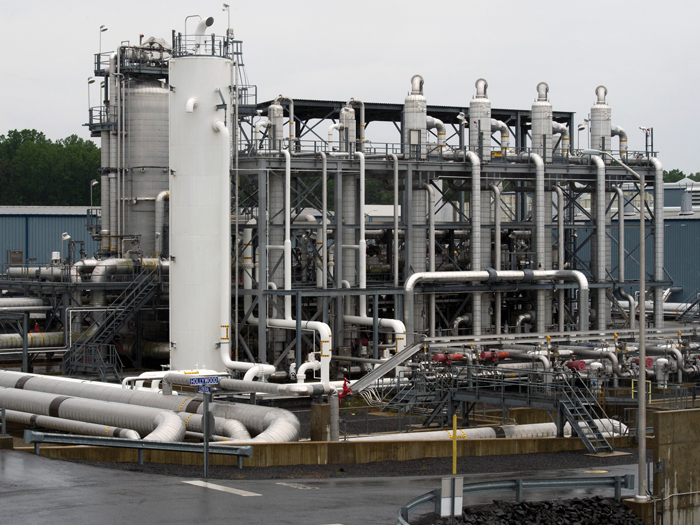The California Utility Deemed Responsible for Wildfires Filed for Bankruptcy Protection. Here’s What Happened

Facing tens of billions of dollars in wildfire liabilities, Pacific Gas and Electric (PG&E) filed for bankruptcy protection January 29, a step that the company has said was its “only viable option.” PG&E provides gas and electricity to 16 million people in central and northern California.
Snapshot: Some PG&E investors, elected leaders in California and public interest groups contend that bankruptcy is not needed and will hurt millions of ratepayers as well as anyone who owns shares in the utility or does business with it.
The filing creates uncertainty for the company’s creditors and people seeking compensation after losing homes and loved ones to fires started by PG&E’s equipment. The case could also cost the company hundreds of millions of dollars in fees, to Wall Street and white-shoe law firms.
Background: Faulty equipment and downed power lines have been implicated in some of the most damaging and deadly wildfires in the past few years. Late in 2018, California enacted a new law, SB-901, in an effort to support corporate responsibility and at the same time balance liability against driving utilities out of business. There was also heavy emphasis on mitigation.
Lead-Up: In the weeks before the PG&E filing, the public debate over the utility’s liabilities grew rancorous.
Protesters took over a California utility commission meeting on January 10, loudly venting their anger at the state’s largest power company over its alleged role in the state’s deadliest-ever wildfire — the Camp Fire.
Read More: California Infernos Put Sharp Focus on the Urgency of Wildfire Defense Strategies
Demonstrators solemnly read the names of 86 people killed in the November blaze. The California Public Utilities Commission, in turn, rushed through its agenda at the meeting in San Francisco. The company said in regulatory documents just after the Camp Fire in November that it may face significant liabilities related to wildfires.
What’s Next: After PG&E filed for bankruptcy, a federal judge declared the beleaguered utility in violation of its probation for the 2010 San Bruno gas pipeline explosion and spent three hours excoriating the company for its role in the blazes that have ravaged Northern California over the past two years.
“Does a judge turn a blind eye and let PG&E continue what you’re doing, let you keep killing people,” U.S. District Judge William Alsup said inside the San Francisco courtroom. “Can’t we have electricity that is delivered safely in this state?”
The finding sets the stage for the judge to add additional and costly terms to PG&E’s criminal probation for the deadly pipeline blast — requirements such as inspections and tree trimming, which the utility says could cost billions of dollars and lead to customer rates rising five-fold.
Back in Sacramento: The California Legislature could seek to expand the scope of legislation it passed last year that allowed utilities to pass on some of the costs of wildfires to its customers in the form of higher electricity rates. But voters would consider that a bailout of PG&E.
One idea, introduced in a bill this past January, proposes creating an industry-financed insurance fund that pays for catastrophic wildfire costs. Such a fund might reassure investors that bankruptcy is no longer the most likely option when a utility is hit with huge damage claims, and it may also satisfy residents who oppose legislation that is too favorable to utilities.
Risk for Renewables: California has the most far-reaching renewable energy laws in the United States. But the PG&E filing is raising major questions about whether the state will be able to meet its ambitious targets for solar, wind and other types of green electricity. In court documents, PG&E asked the bankruptcy court to allow it to cancel up to $42 billion in power-purchase contracts signed over the past 15. More than three-quarters of those contracts commit PG&E to purchase solar, wind or other renewable energy. &










